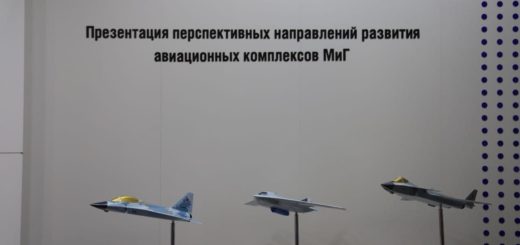French Rafale vs Korean KF-21: Peru Launches Tender for New Fighter Jet

{loadposition bannertop}
{loadposition sidebarpub}
The Peruvian Air Force (FAP) is setting the stage for a major overhaul of its combat fleet. General Carlos Enrique Chávez Cateriano, the commanding general of the FAP, announced on July 8, 2024, that a comprehensive market study for new fighter jets has been concluded. The FAP has shortlisted three international manufacturers that meet their stringent requirements, with the French Rafale and the Korean KF-21 identified as the leading contenders.Follow Army Recognition on Google News at this link
The French Rafale (left) and the Korean KF-21 (right) are the two favorites for the Peruvian Air Force (Picture source: Dassault/KIA)
This modernization effort is part of the current government’s commitment to addressing the urgent need to update military weaponry and equipment systems. The FAP’s current lineup, including aging Mirage 2000 and MiG-29 fighters, underscores the urgency of this upgrade, especially since the French-made Mirages are still operational, attesting to their durability. The Rafale, produced by the same manufacturer, Dassault Aviation, is considered the natural successor to the Mirage 2000. Known for its versatility, the Rafale can perform multiple combat roles including air superiority, interdiction, and nuclear deterrence, and is equipped with a comprehensive suite of armaments and electronic warfare systems.
Additionally, the FAP is considering other options to ensure a diversity of suppliers and technologies. This includes the Swedish Gripen E/F, known for its high acquisition costs and long delivery times, and the Eurofighter Typhoon, which Spain offered to Peru in 2013.
The FAP is also evaluating the American F-16 Fighting Falcon from Lockheed Martin, despite past issues with the supply chain for U.S. parts. The Boeing FA-18 Super Hornet is another candidate, favored for its robust landing gear suitable for rough airstrips.
The Korean KF-21 Boramae from Korea Aerospace Industries (KAI) is also in contention. As a 4.5 generation fighter, the KF-21 aims to bridge the gap between older models and fifth-generation fighters with its advanced avionics and AESA radar. It promises significant enhancements in stealth and combat capabilities over its predecessors.
Though it has only recently entered production, KAI may offer concessions in technology transfer and logistics, enhancing its appeal. Additionally, KAI has recently signed an agreement to produce parts for the FA-50 light fighter at Seman Peru S.A.C., which could extend to the KF-21 as part of a purchase agreement.

{loadposition bannertop}
{loadposition sidebarpub}
The Peruvian Air Force (FAP) is setting the stage for a major overhaul of its combat fleet. General Carlos Enrique Chávez Cateriano, the commanding general of the FAP, announced on July 8, 2024, that a comprehensive market study for new fighter jets has been concluded. The FAP has shortlisted three international manufacturers that meet their stringent requirements, with the French Rafale and the Korean KF-21 identified as the leading contenders.
Follow Army Recognition on Google News at this link
The French Rafale (left) and the Korean KF-21 (right) are the two favorites for the Peruvian Air Force (Picture source: Dassault/KIA)
This modernization effort is part of the current government’s commitment to addressing the urgent need to update military weaponry and equipment systems. The FAP’s current lineup, including aging Mirage 2000 and MiG-29 fighters, underscores the urgency of this upgrade, especially since the French-made Mirages are still operational, attesting to their durability.
The Rafale, produced by the same manufacturer, Dassault Aviation, is considered the natural successor to the Mirage 2000. Known for its versatility, the Rafale can perform multiple combat roles including air superiority, interdiction, and nuclear deterrence, and is equipped with a comprehensive suite of armaments and electronic warfare systems.
Additionally, the FAP is considering other options to ensure a diversity of suppliers and technologies. This includes the Swedish Gripen E/F, known for its high acquisition costs and long delivery times, and the Eurofighter Typhoon, which Spain offered to Peru in 2013.
The FAP is also evaluating the American F-16 Fighting Falcon from Lockheed Martin, despite past issues with the supply chain for U.S. parts. The Boeing FA-18 Super Hornet is another candidate, favored for its robust landing gear suitable for rough airstrips.
The Korean KF-21 Boramae from Korea Aerospace Industries (KAI) is also in contention. As a 4.5 generation fighter, the KF-21 aims to bridge the gap between older models and fifth-generation fighters with its advanced avionics and AESA radar. It promises significant enhancements in stealth and combat capabilities over its predecessors.
Though it has only recently entered production, KAI may offer concessions in technology transfer and logistics, enhancing its appeal. Additionally, KAI has recently signed an agreement to produce parts for the FA-50 light fighter at Seman Peru S.A.C., which could extend to the KF-21 as part of a purchase agreement.







